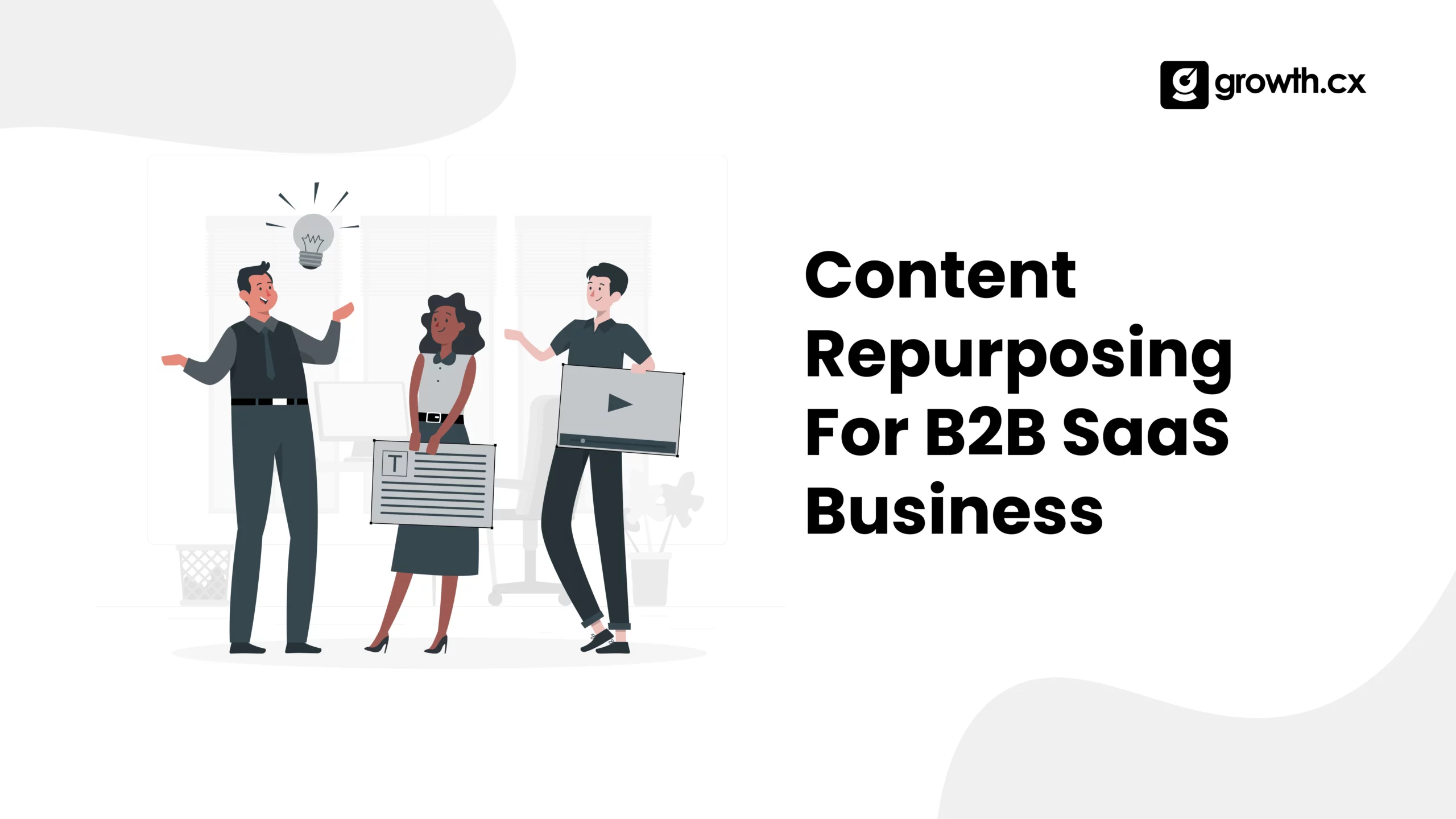According to SEMrush’s State of Content Marketing Report 2023, 42% of marketers discovered that updating and repurposing content helped in their most successful campaigns.
This statistic highlights the importance of content repurposing for B2B SaaS businesses. By adapting content for different platforms, companies can increase the visibility and lifespan of their original work. A strategic approach to content repurposing can lead to more website traffic and better engagement with your audience.
In this blog, we will explore content repurposing, strategy, and content repurposing framework.
What is Content Repurposing
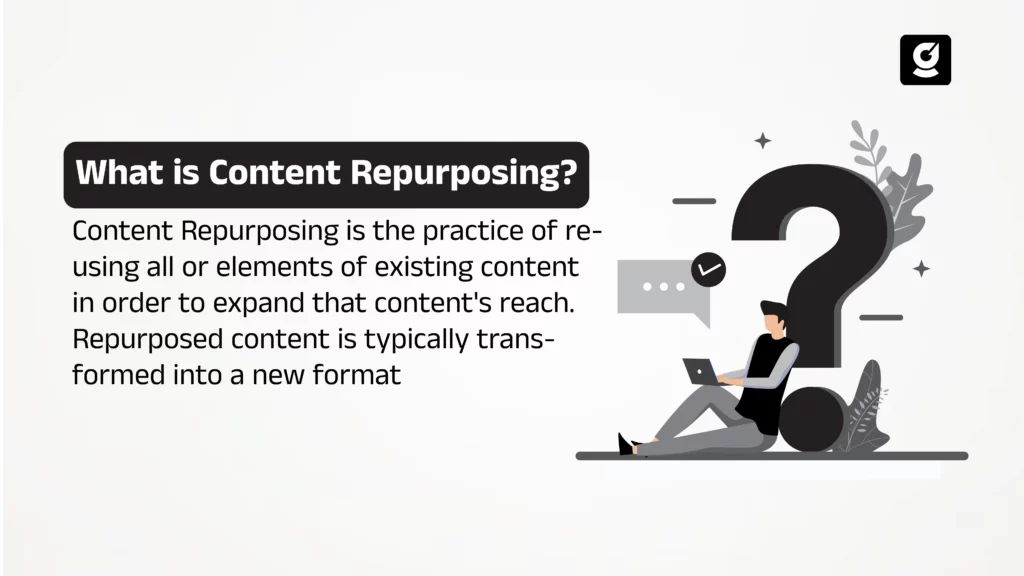
Content repurposing is the process of reformatting it across different mediums. That helps to extend its lifespan and impact. Repurposing transforms the content’s format to appeal to other segments of your audience. Or to fit various platforms, maximizing its utility and effectiveness.
Here, a blog post can be repurposed into email, social media, video, podcast, infographics, and ebook.
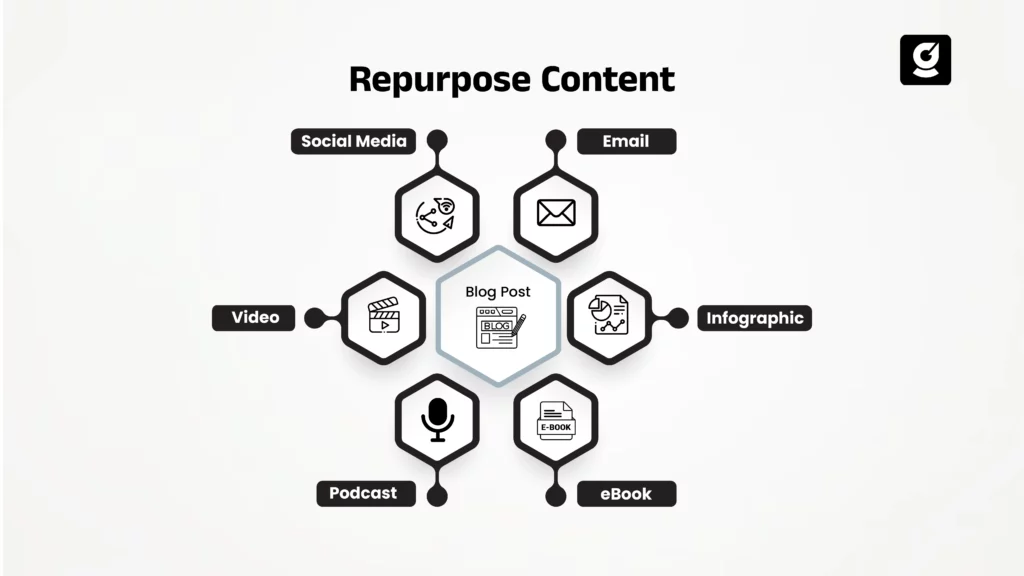
HubSpot, SEMrush, and Backlinko define content repurposing as,
- Content repurposing or content recycling means reusing existing quality content. And presenting it in a different format to expand its reach and lifespan – Hubspot.
- Repurposing content involves adding to or heavily revising your content to add more value – SEMrush.
- Repurposing content is reusing all or elements of existing quality content to expand that content’s reachability. Repurposed content is typically changed into a new type of format (like turning a blog post into an infographic) – Backlinko.
You can repurpose your existing B2B SaaS content, like

Also Read: Content Marketing Services: Your Key to Business Success
Benefits Of Content Repurposing For Your B2B SaaS
Content repurposing offers numerous advantages, which we have outlined below.
- Helps in Reach: Repurposing content into various formats (e.g., blogs, videos, podcasts, infographics). That allows businesses to reach different audience segments across multiple platforms. Some users prefer visual content over text or audio over video. Repurposing content caters to these diverse preferences and increases its reach.
- Improve SEO: By repurposing content across different platforms and formats, you can target a variety of keywords. That can include long-tail keywords that you might not have targeted initially. This can improve your site’s SEO, leading to increased organic traffic and visibility. Repurposed content creates new opportunities for search engines to index it. It also helps drive more traffic back to your site.
- Brand Authority: Regularly producing quality content helps establish your brand as an authority in your industry. Content repurposing supports your message and expertise across different channels. It strengthens your brand’s credibility and trustworthiness in your target audience.
- Cost-Effectiveness: Repurposing existing content maximizes the ROI of your initial investment. That is done by transforming a single piece of content into multiple assets. This approach is far more cost-effective than continually producing new content from scratch.
- Increased Engagement: By repurposing content, you can increase overall engagement by meeting your audience where they are and in the format they prefer. This step can lead to higher engagement, shares, and conversions.
- Content Personalization: Repurposing content allows for greater personalization by tailoring content to meet the specific requirements and preferences of different segments of your audience. You can enhance the customer experience, increase satisfaction, and boost loyalty.
Content Repurposing: What It Is and What It Isn’t
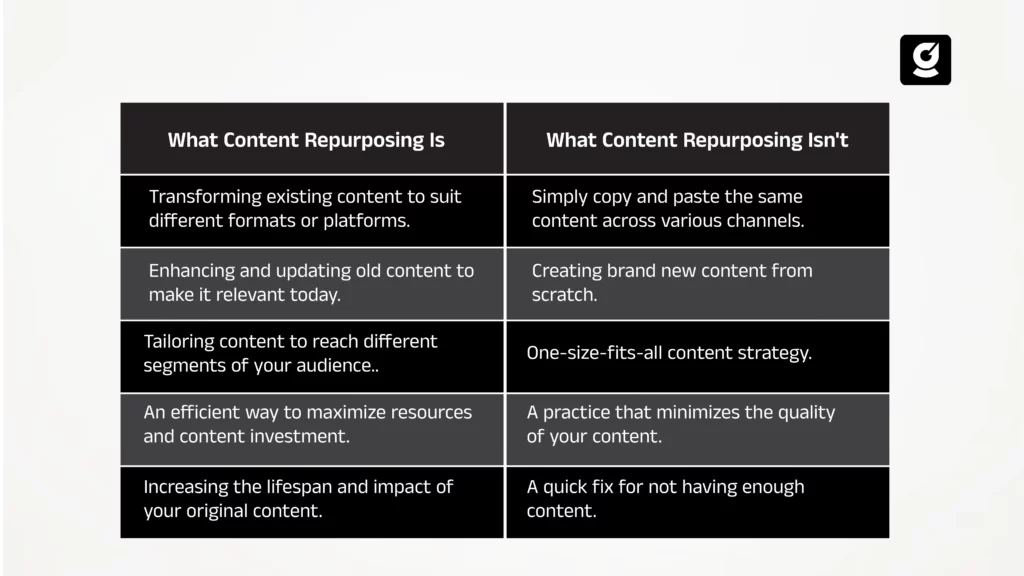
Best Content Repurposing Strategies
Having a systematic approach to content repurposing is crucial for any B2B SaaS business. This content repurposing framework helps you create a basic setup of your existing content.
1. Goals and Objectives
Begin by articulating what success looks like for your content repurposing efforts. Whether it’s increasing your reach, enhancing engagement, boosting SEO rankings, or generating more leads, having clear goals will guide your strategy.
For each objective, define specific, measurable targets. This could include a particular percentage increase in website traffic. An exact number of leads was generated, or there was an improvement in engagement metrics.
2. Track Your Analytics
- Use Analytics Tools
Leverage tools like Google Analytics, social media insights, and content management systems. Analytics helps gather data on your current content performance and look for patterns in the data.
- Which types of content (videos, blogs, infographics) are performing best?
- What topics resonate most with your audience?
- What is the engagement level on different platforms?
- Identify Contents for Repurposing
Select content that has already performed well or has the potential for greater impact with some updates and a new format.
3. Create a Repurposing Strategy
- Content Selection
Based on your analytics review, choose content that aligns with your goals and has demonstrated value to your audience.
- Identify Repurposing Opportunities
Determine how each piece of content can be transformed. For example, a popular blog post could be turned into a series of short videos, an infographic, or a podcast episode.
- Plan for Different Formats
Consider a variety of formats for repurposing content to cater to audience preferences and platforms. This can include visual content, audio, text, and interactive formats.
- Develop a Timeline
Create a timeline for repurposing and releasing content. This timeline should consider key dates and audience engagement patterns. Also, examine external factors that affect the relevance and impact of your content.
4. Repurpose with Direction
- Content Quality and Relevance
Update statistics, facts, and any references in your content to ensure they are current. Tailor the required content to fit the new format effectively while maintaining its original value.
- Target the Right Audience
Tailor repurposed content to the platform and the segment of your audience that engages with it. Different marketing platforms cater to various demographics and interests, so customize your message accordingly.
- Promote The Content
Use your marketing channels to promote your repurposed content. This could include email marketing, social media, paid ads, and collaborations with influencers or other brands.
- Evaluate The Repurposed Content
Monitor the performance of your repurposed content against the objectives and KPIs you’ve set. Use these insights to refine your approach, trying different formats and distribution channels as necessary.
Suggested Read: Complete Guide to B2B SaaS Content Marketing
Real-Life Example Of Content Repurposing Framework
1. SEMrush
SEMrush is a prime example of effective content repurposing. They publish high-quality content on their website and then repurpose the same content for their LinkedIn audience without leaving any details.
They also include a link to the original post in their LinkedIn post to drive more traffic to their website. Additionally, they focus on using images that contain relevant content to help the audience. So they can better understand the context of the infographics.
They published a 14-minute read blog on their website about the conversion funnel, covering TOFU, MOFU, and BOFU.
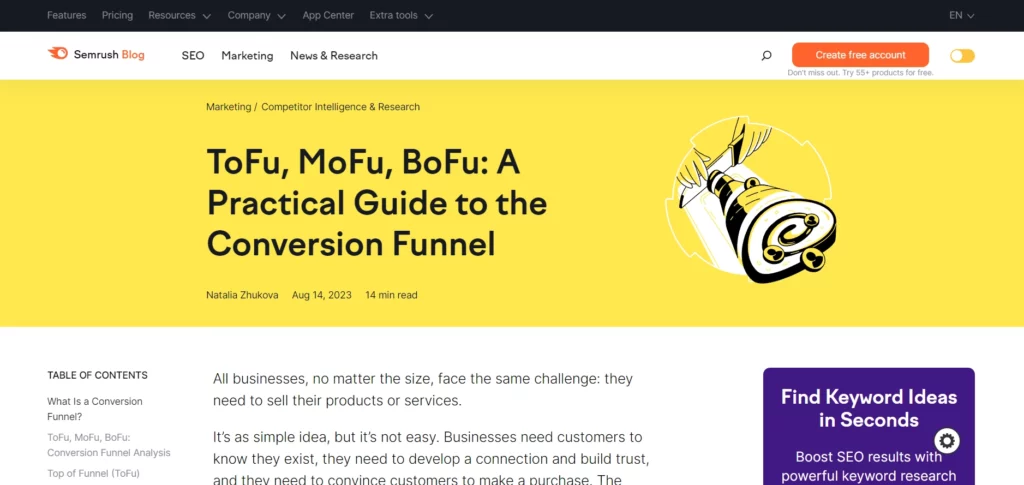
They utilize an effective content repurposing strategy by creating a LinkedIn carousel post that includes all the key points from their blog. This repurposing technique helps to increase the reach of their content by presenting it in a new and engaging format.
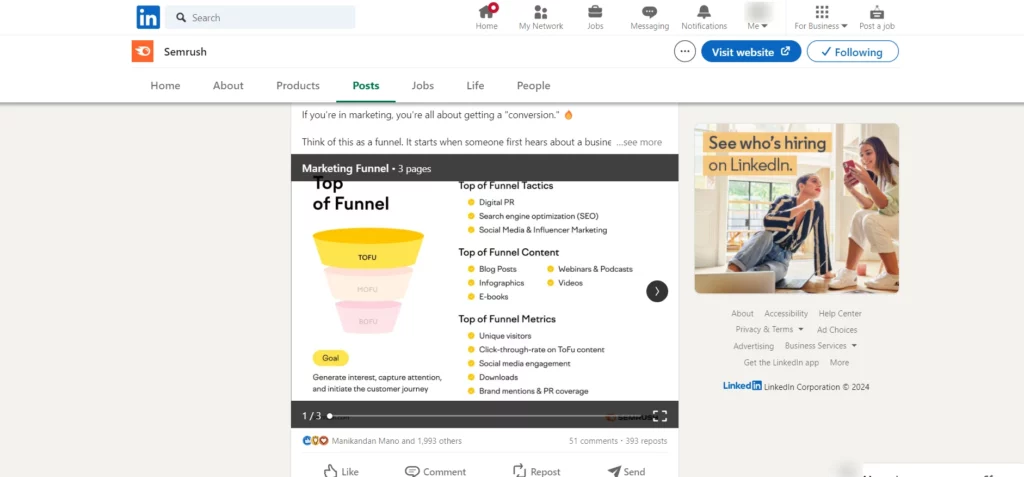
A carousel post on LinkedIn allows users to swipe through multiple images or slides, making it an ideal way to showcase the highlights of a blog post in a visually appealing way. By repurposing its content in this manner, SEMrush was able to effectively communicate its message and reach a wider audience on LinkedIn.
This is an excellent example of a content repurposing strategy. All types of businesses use this content repurposing strategy for engagement. You can also try it to establish a content repurposing plan for your brand.
Also Read: 13 B2B SaaS Content Marketing Agencies in 2024
Conclusion
Now, you know what content repurposing is and the strategies that you can use in your B2B SaaS business. Strategically using these methods helps you make more conversions and engagement on your website.
If you are struggling with content strategy, consider getting help from a top content marketing agency. They can set up the right plan for your website’s content and handle content repurposing for you.
For your B2B SaaS company, growth.cx is the best content marketing agency. They have a team of experts to take your business to the next level. When you select their content marketing service, you get a complimentary bundle that includes a free content calendar template, a free website content audit and suggestions, and a free premium SuiteJar account as your SEO audit tool.

Suggested Read: Ultimate Guide To B2B SaaS Content Marketing
